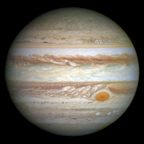Search results
Dec 26, 2014 · The same applies to the beams of light above them. The Sun is very far away and the beams are pretty much parallel, but they're pointing towards you, and perspective makes them appear to converge towards the vanishing point - which in this case is the Sun's location in the sky. The technical term for these beams is "crepuscular rays."
If you want your eyes to receive 32000~100000lux, you need to stare at the sun in a sunny day.If you stare at the ground in a sun-exposure area, your eyes receives much less than 32000 lux. If you stare at a shedded ground in a sunny day, your eyes receive slight less than 10000lux. human eyes could not tolerate 32000lux more than 5 secounds.
Apr 27, 2018 · So my conclusion is that dropping Jupiter into the Sun in this scenario would be like dropping a depth charge, with a lag of order $10^ {5}$ years before the full effects became apparent. Scenario 2: Jupiter arrives at Roche limit (just above the solar surface) having mysteriously lost a large amount of angular momentum.
May 31, 2015 · If it's on the sun-facing side in Las Vegas you may find it gets hot enough to cause burns. A definitive answer is not possible. If people can touch it easily the temperature is a concern. If it's out of reach, don't worry about it. The iron isn't going to melt. "blackened steel" isn't very descriptive.
Oct 8, 2013 · A well known story "Two Children arguing about the sun" (From Lie Zi, ca. 500BC): On the way traveling to the east, Confucius saw two children were arguing. One child thought that the sun is nearer to us at daybreak and far away from us at noon, because in the morning it is as big as the canopy of a carriage, but at noon only the size of a ...
Apr 17, 2015 · If we assume the Sun orbits the Earth, the math says that the Sun should be much less massive than the Earth. If we assume the Earth orbits the Sun, the opposite is true. Either way we can get an estimate of the mass of the Sun. We know from other tests that the Sun is more massive than the Earth, so therefore the Earth orbits the Sun.
The continuous spectrum of the visible photosphere of the Sun is attributable to the radiative equilibrium of the $\mathrm{H}^{-}$ ion. This has been recognised for at least 80 years ( Wildt 1939 ). This ion forms by the attachment of a free electron (with a continuous spectrum of energies) to a hydrogen atom, emitting a continuous spectrum of photons in the process.
May 22, 2018 · Look up the Stefan-Boltzmann law in Wikipedia; it provides a value for the constant. We assume the sun loses energy as fast as it produces energy. Just for fun, look up the sun's mass and then compare the rate of heat loss (= energy production) per unit mass for the sun and for a human being (by using the Stefan-Boltzman law on a typical human ...
Feb 15, 2017 · The Sun has actually set/risen and we see it due to the way light is bent across the atmosphere. Apparently due to coincidence of the size and distance of the sun, its exactly the same size - so if we see 50% of the sun, the sun is 50% below the horizon. So, I understand all this, so here is my question :
Aug 27, 2015 · Incandescent light bulbs (the ones with a filament) operate similarly to the sun - they emit light because the filament heats up, and when objects heat up they emit a lot of light. If you put your hand in front of an incandescent light bulb you will feel a lot of heat, because most of the light it emits is infrared.



















